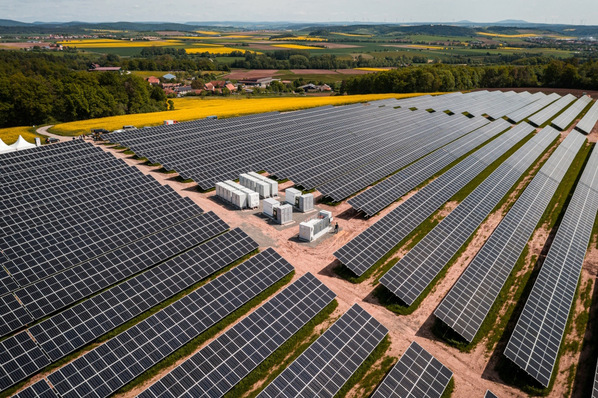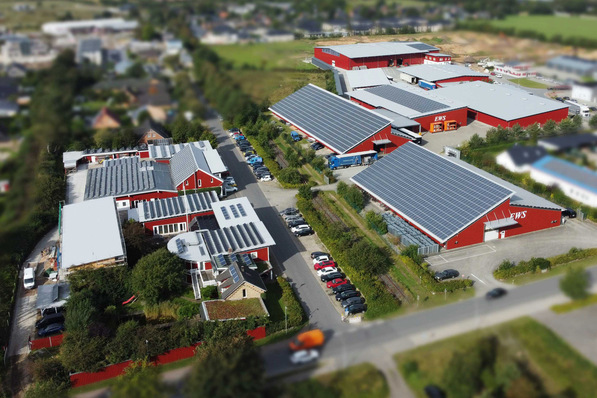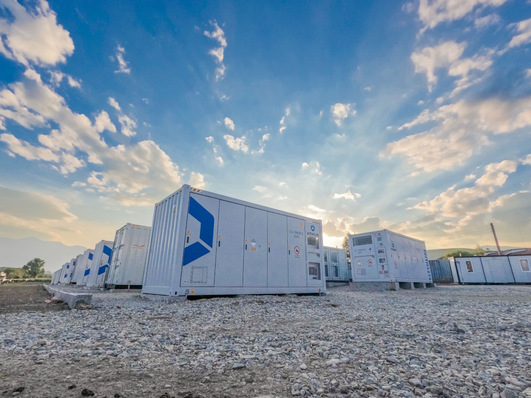Under the motto "Power Up your Future - Sungrow PowerTitan 2.0 Experience Day", the Chinese provider of energy storage systems and inverters invited over 200 customers and industry representatives to Madrid on 7 March. It became clear that photovoltaics and energy storage systems are growing ever closer together as the proportion of renewables in the energy mix increases.
After all, storage systems buffer the volatile peaks in solar and wind power generation, ensure that surplus renewable electricity can be used sensibly and help to stabilise the grid. From an electricity share of 50 to 70 per cent renewable energies, grid management becomes increasingly challenging and drives the use of energy storage systems, according to the tenor of the event.
Tendering in vogue - falling prices - more competition
As a result, more and more countries in Europe and around the world are looking to incentivise the use of large-scale battery storage systems to stabilise the grid, reported Sam Wilkinson, analyst at S & P Global Commodity Insights (London). For example, there are corresponding tenders in Poland, Romania, Italy, South Africa and the United Arab Emirates.
Wilkinson anticipates that around 140 gigawatts of additional energy storage capacity will be installed in Europe by 2030 and that system sizes will continue to increase. According to Wilkinson, battery storage costs have fallen by almost 30 per cent in the past two years, mainly due to lower metal prices. The analyst assumes that this trend will continue. This is because metal prices are continuing to fall, competition is increasing and many new suppliers are entering the market, particularly in China.
Wilkinson sees another market trend in the fact that project developers are increasingly buying complete large-scale AC battery storage systems, such as the new PowerTitan 2.0 from Sungrow, rather than configuring them themselves.
Matthew Boulton, Director at EDF Renewables UK and Ireland, also emphasised the increasing importance of large-scale battery storage systems for a stable energy supply. He emphasised that the discussion on solar power costs will therefore increasingly shift from pure generation costs to the supply costs of photovoltaics in combination with storage systems.
European storage strategy overdue
Despite the increasing number of tenders, however, there is a lack of a European storage strategy, according to Margareta Roncevic. Policy Officer at EASE (European Association for Storage of Energy), financial incentives for investments in large-scale storage systems are still lacking in many cases. There is an urgent need for a European storage strategy at EU level, which would then also provide the regulatory framework in the member states. The implementation of a new market design that eliminates the double burden of storage systems with grid charges is overdue.
Digitalisation offers a great opportunity for improved recycling of battery storage systems in the future, emphasised Roncevic. However, she assumes that it will be several years before recycling becomes an important component of a European supply chain for energy storage systems.
Production in Europe?
And what about Sungrow's plans to invest in the production of large-scale storage systems in Europe in light of the current discussion about strengthening European industrial value chains? There are currently no concrete plans for this, but if the market continues to grow, this could be interesting in the future, said Javier Izcue, Vice-President of Sungrow Europe.
Apart from that, the company already has strong suppliers in Europe as well as research and development centres in the Netherlands and Germany. Around 40 per cent of Sungrow's 30,000 employees worldwide work in research and development, said Izcue. In addition to battery storage systems, the company is also researching and developing seasonal energy storage systems and has its own hydrogen department with initial pilot projects in China and Australia. (hcn)








